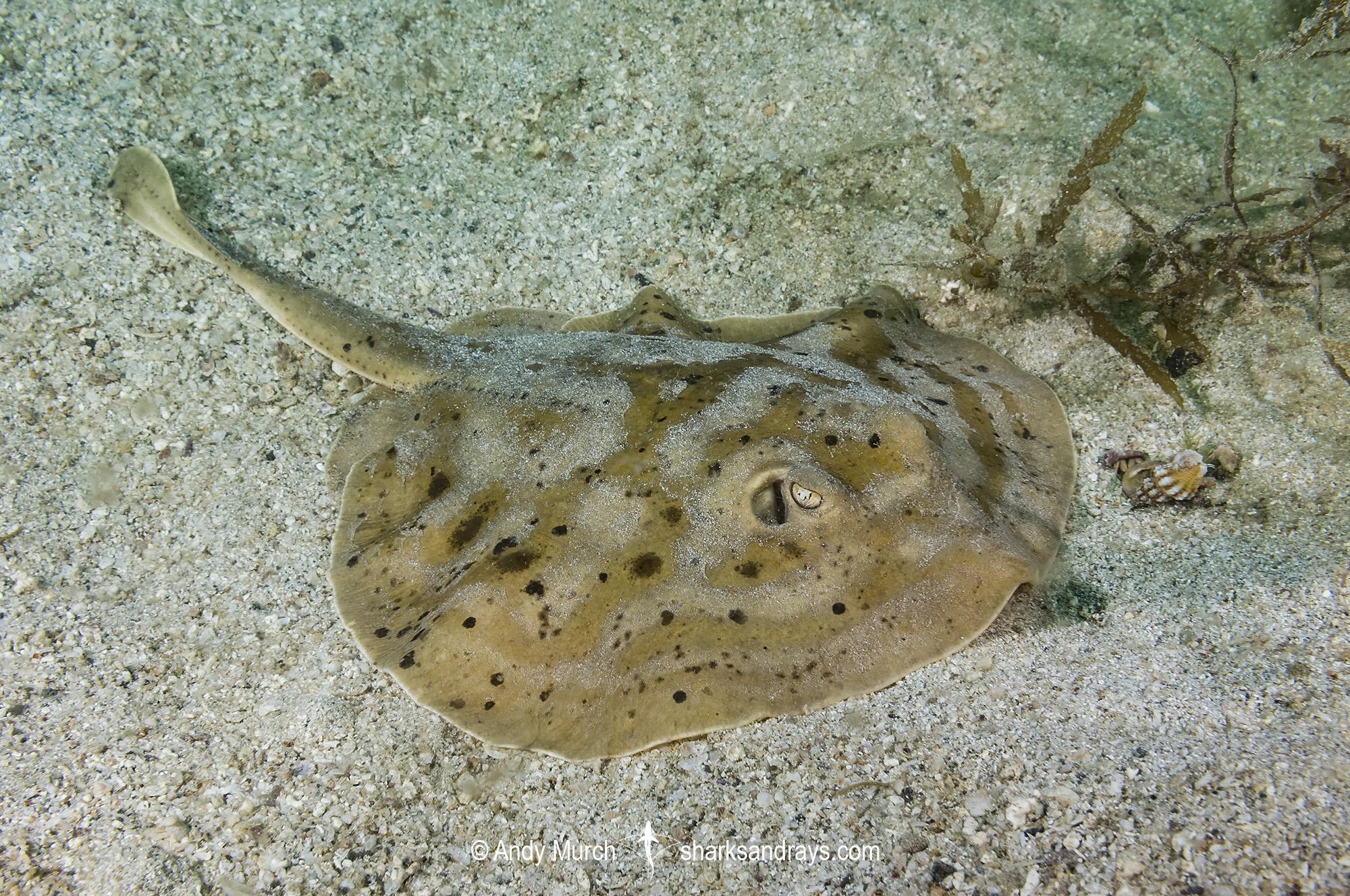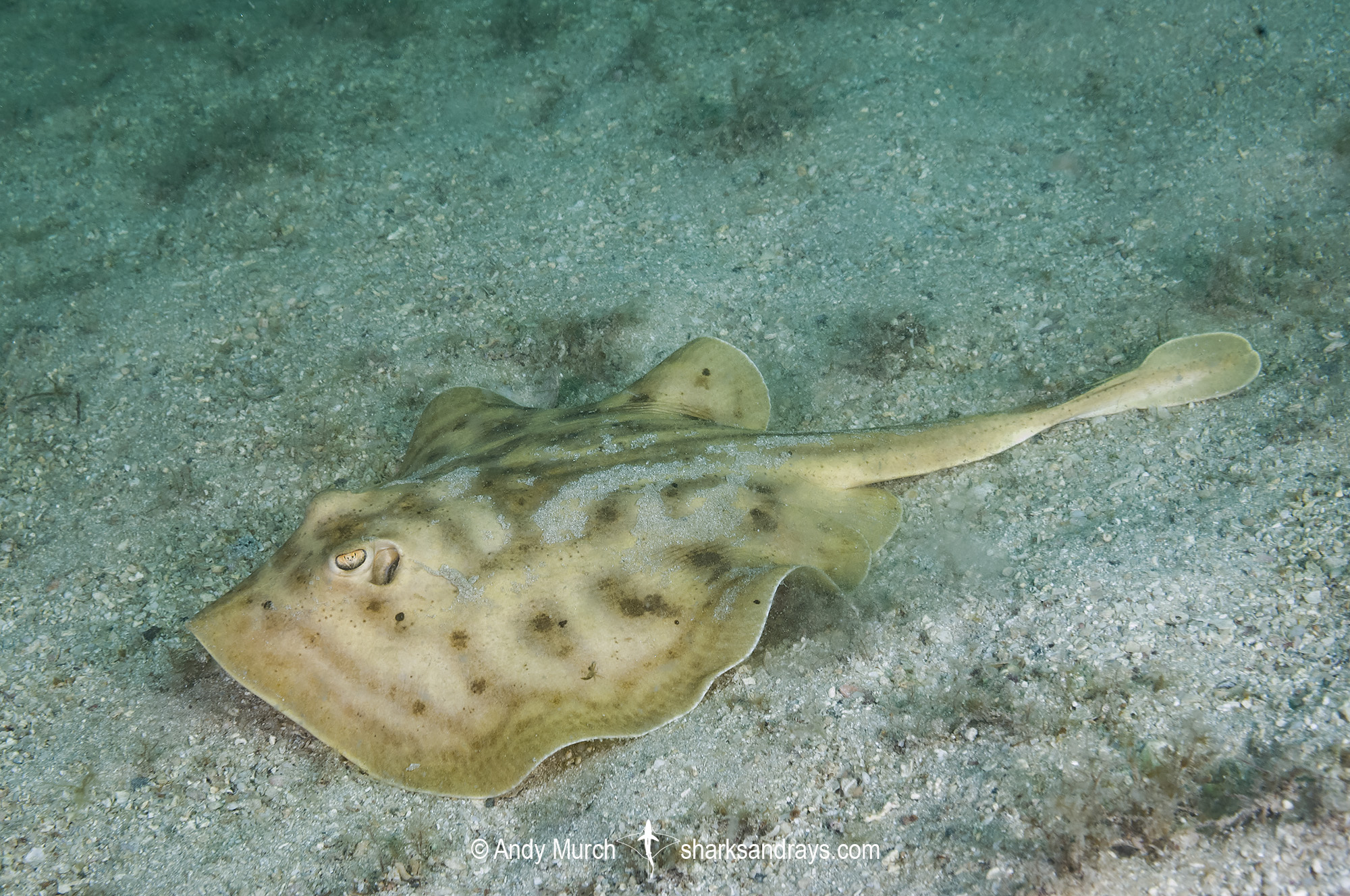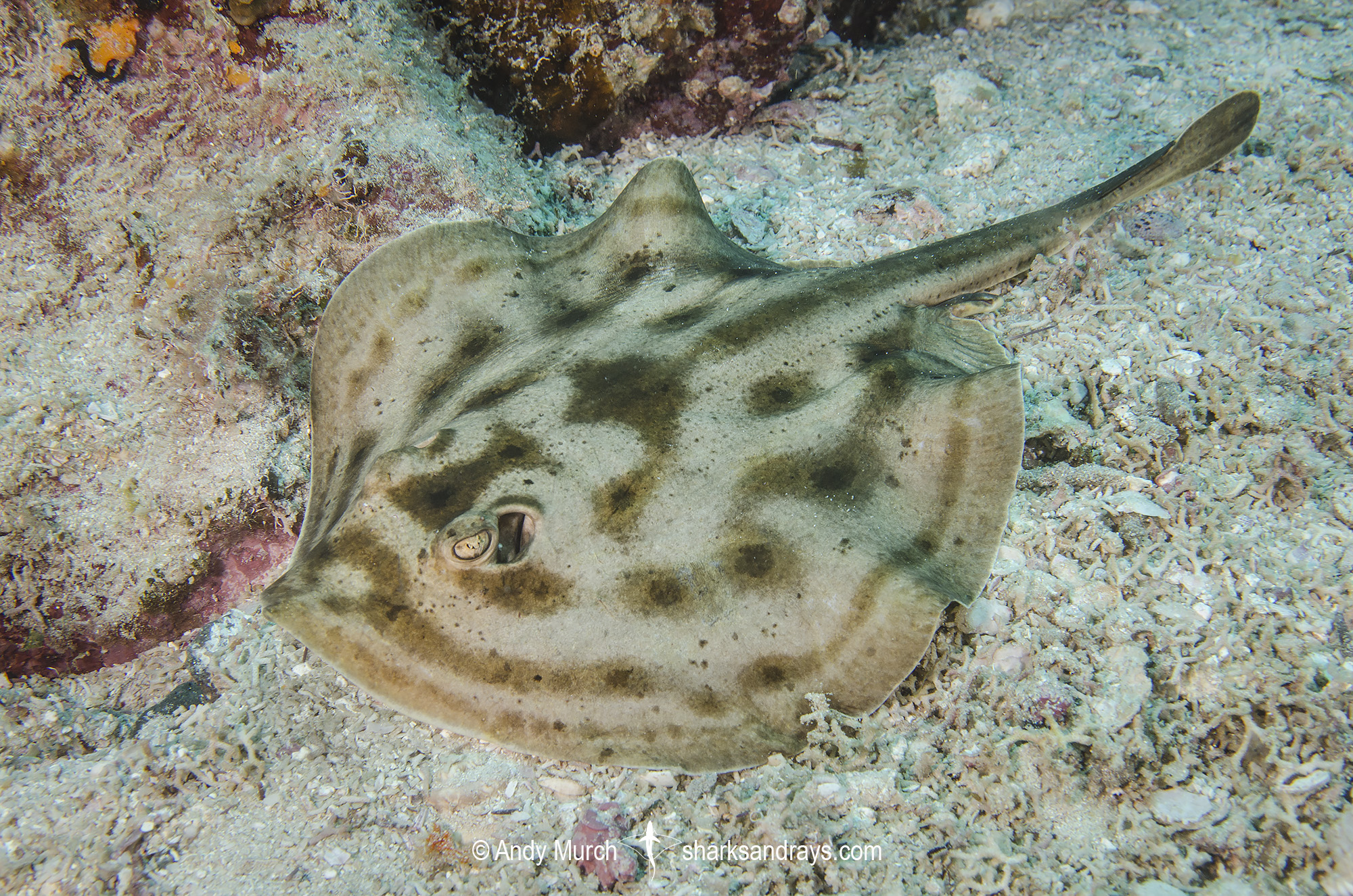Common names
Cortez Round Stingray, Spotted Round Ray.
Binomial
Urobatis maculatus.
Synonyms
Urolophus maculatus.
Identification
A small to medium sized round stingray with a sub-circular disc that is approximately equal in width and length. Snout bluntly angular. Anterior margins of disc almost straight towards snout tip, apices evenly rounded. Disc completely smooth. Pelvic fins broadly triangular with rounded posterior margins, lengths greatly exceeding width.
Eyes small; orbit length 0.3-0.38 x snout length. Mouth weakly arched. Nasal curtain skirt-shaped. Nostrils slit-like.
Tail short and broad based, anteriorly depressed. Lateral skin folds most prominent anterior to caudal sting. Tail length 49-53% of total length. Caudal sting short, length approximately equal to caudal fin. Caudal fin short and high, with a high upper lobe and a bluntly rounded posterior margin that is sometimes indented in juveniles.
Colour
Dorsal coloration somewhat variable. Generally yellowish-brown to grey-brown with numerous symmetrically positioned, dark, roughly eye-sized spots, and subtle, underlying concentric rings and thin bands that form a vaguely honeycomb-like pattern. Occasionally symmetrical pattern is augmented with or replaced by randomly scattered smaller dark spots and flecks. Ventrum usually white with a dark margin posterior to mouth level and ventrally on tail.
Size
Total length 42cm. Length at birth unknown.

Conservation Status
LEAST CONCERN
The Spotted Round Ray is a bycatch component of industrial shrimp trawl fisheries and in artisanal gillnets, which operate throughout its range. Although it is usually discarded alive, fishermen often cut off its tail, which probably leads to a high rate of post release mortality. In the Gulf of California shrimp trawl fishery, Urobatis maculatus is captured frequently, but in Mazatlan catches are declining. Due to it’s continued relative abundance, is likely productive enough to withstand some fishing pressure.

Habitat
Tropical/subtropical seas. Found in shallow sandy bays and on reef rubble from close inshore to 30m.
Distribution
Eastern Pacific. The Cortez round stingray is found from Bahia Sebastian Vizcaino, Baja California, to Puerto Vallarta, Jalisco, Mexico, including the Gulf of California.
Reproduction
Aplacental viviparous. Litter size unknown.
Diet
Small benthic invertebrates such as worms and crustaceans.
Behavior
Congregates seasonally in large numbers in the southern Sea of Cortez.
Reaction to divers
Generally skittish. Likely to move away once discovered but sometimes initially tolerant if approached carefully.
Diving logistics
Cortez round stingrays are extremely common in shallow bays on the Baja side of the Sea of Cortez.
During the summer months, while snorkelling off the beach near the lighthouse in Mulege, I encountered five individuals within about ten minutes. They are also commonly seen in this area whilst scuba diving in less than 20m.
The beaches south of Mulege are also excellent places to encounter Cortez round stingrays.
At Playa El Burro in October, I encountered many (perhaps a hundred or more) in less than 3m of water.
At Playa Conception in February, I found hundreds of Cortez Round Stingrays over the course of three days. The water temp was a chilly 65 degrees.
What’s new
View our full list of updates
Similar species
Bullseye Round Stingray Quite similar but distinguishable by the lack of defined dark spots.












